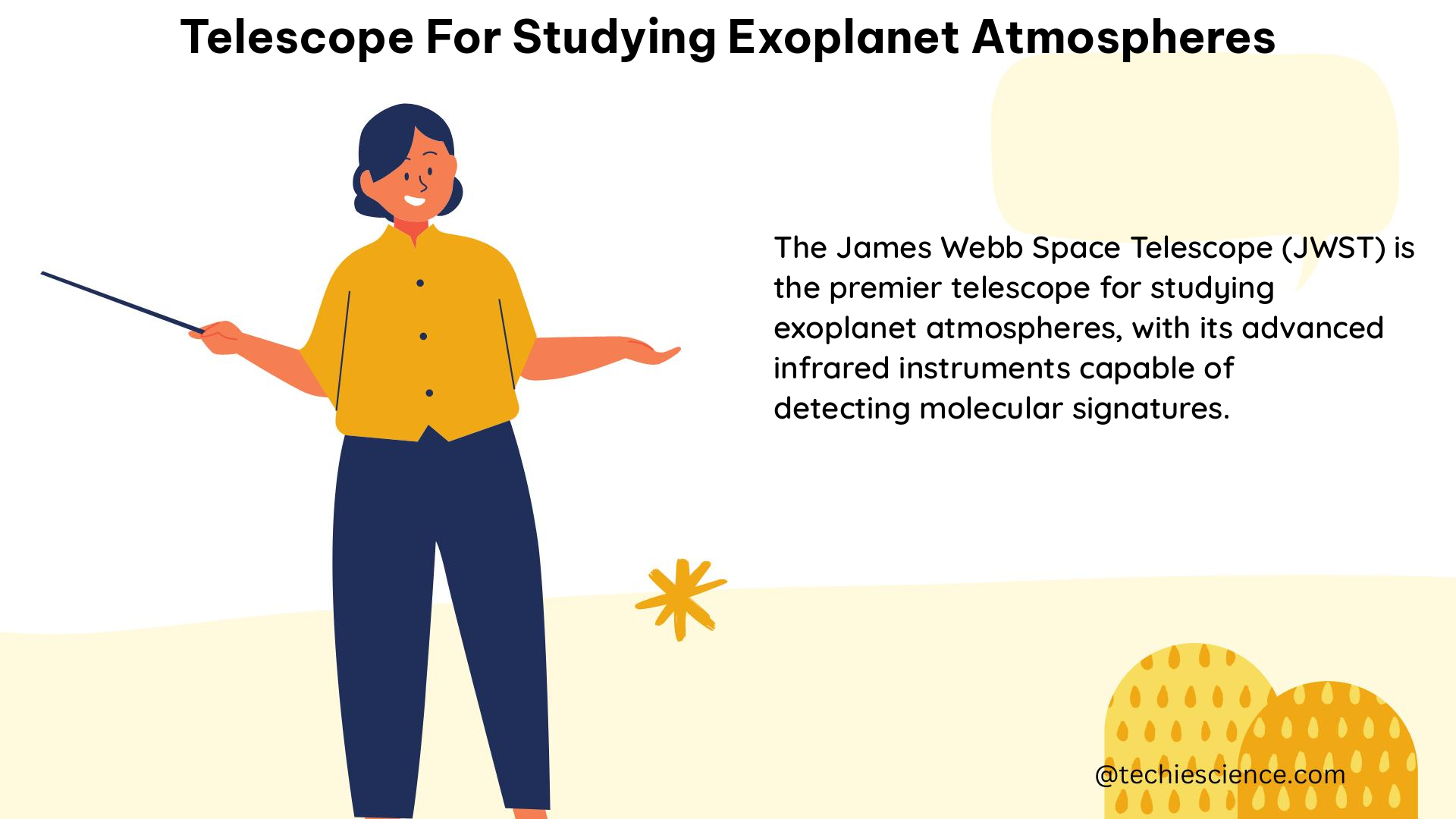The James Webb Space Telescope (JWST) is a revolutionary instrument that has revolutionized the field of exoplanet atmospheric studies. With its unparalleled sensitivity, spectroscopic capabilities, and broad wavelength coverage, JWST has become a game-changer in our understanding of the composition and properties of distant planetary atmospheres.
Transmission Spectroscopy: Unveiling the Secrets of Exoplanet Atmospheres
One of the primary techniques used by JWST to study exoplanet atmospheres is transmission spectroscopy. This method involves observing the star as the exoplanet passes in front of it, creating a backlit effect where the starlight filters through the planet’s atmosphere. As the starlight passes through the exoplanet’s atmosphere, certain wavelengths are absorbed by the molecules present, causing dips in the observed spectrum.
By subtracting the spectrum of the star from the combined spectrum of the star and the exoplanet, researchers can isolate the light that was absorbed when it passed through the exoplanet’s atmosphere. This allows them to determine the chemical composition of the exoplanet’s atmosphere by comparing the observed light-absorption dips with extensive reference data on the absorption spectra of various molecules.
Technical Specifications of JWST for Exoplanet Atmospheric Studies

- Telescope Type: Space Telescope
- Primary Mirror Diameter: 6.5 meters
- Wavelength Coverage: 0.6 to 28.5 microns
- Sensitivity: 10 to 100 times greater than previous space telescopes
- Spectroscopic Capabilities:
- NIRISS/SOSS mode: Capable of high-resolution spectroscopy in the near-infrared (1.0-2.5 μm) range, allowing for the detection of molecular features in exoplanet atmospheres.
- NIRSpec/G395H mode: Provides high-resolution spectroscopy in the near-infrared (2.9-5.0 μm) range, enabling the study of the thermal emission and absorption features of exoplanets.
- Transmission Spectroscopy: JWST’s instruments are designed to measure the contents of an exoplanet’s atmosphere by isolating the light that was absorbed when it passed through the exoplanet’s atmosphere.
- Resolving Power: JWST’s high-resolution data and images in a broader range of infrared light allow for detailed analysis of exoplanet atmospheres.
Advantages of JWST for Exoplanet Atmospheric Studies
- Larger Mirror: JWST’s primary mirror, with a diameter of 6.5 meters, collects significantly more light than previous space telescopes, enabling the study of fainter and more distant exoplanets.
- Increased Sensitivity: JWST’s instruments are 10 to 100 times more sensitive than previous space telescopes, allowing for the detection of weaker atmospheric signals.
- Broader Wavelength Coverage: JWST’s wavelength coverage spans from 0.6 to 28.5 microns, providing a comprehensive view of the infrared spectrum and enabling the detection of a wider range of molecular species.
- Improved Spectroscopic Capabilities: JWST’s advanced spectroscopic instruments, such as NIRISS/SOSS and NIRSpec/G395H, can infer the absolute flux of hot and warm exoplanets, crucial for resolving the sharp increase in flux on the short-wavelength side of the planet’s blackbody emission.
- High Resolving Power: JWST’s high-resolution data and images in a broader range of infrared light allow for detailed analysis of exoplanet atmospheres, enabling the identification of specific molecular species and their abundances.
Exoplanet Atmospheric Studies with JWST: The TRAPPIST-1 System
One of the exciting examples of JWST’s capabilities in exoplanet atmospheric studies is its observation of the TRAPPIST-1 system. JWST will use transmission spectroscopy to make the first detailed near-infrared study of the atmosphere of a habitable-zone exoplanet in this system.
The goal of this study is to determine the chemical composition of the exoplanet’s atmosphere by comparing the observed light-absorption dips with extensive references that detail the light absorption of various molecules. This will provide crucial insights into the potential habitability of these exoplanets and their suitability for supporting life as we know it.
Conclusion
The James Webb Space Telescope is a revolutionary instrument that has transformed the field of exoplanet atmospheric studies. With its unparalleled sensitivity, spectroscopic capabilities, and broad wavelength coverage, JWST has become a powerful tool for unveiling the secrets of distant planetary atmospheres. By utilizing techniques like transmission spectroscopy, researchers can now study the chemical composition of exoplanet atmospheres in unprecedented detail, paving the way for a deeper understanding of the diversity and potential habitability of these distant worlds.
References:
– A New Window on Alien Atmospheres
– JWST Observations of the TRAPPIST-1 System
– How Will Webb Study Exoplanets?

The lambdageeks.com Core SME Team is a group of experienced subject matter experts from diverse scientific and technical fields including Physics, Chemistry, Technology,Electronics & Electrical Engineering, Automotive, Mechanical Engineering. Our team collaborates to create high-quality, well-researched articles on a wide range of science and technology topics for the lambdageeks.com website.
All Our Senior SME are having more than 7 Years of experience in the respective fields . They are either Working Industry Professionals or assocaited With different Universities. Refer Our Authors Page to get to know About our Core SMEs.